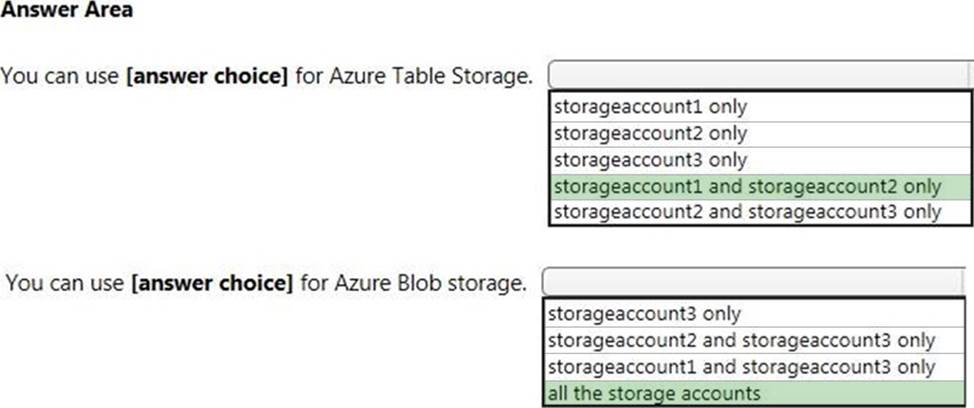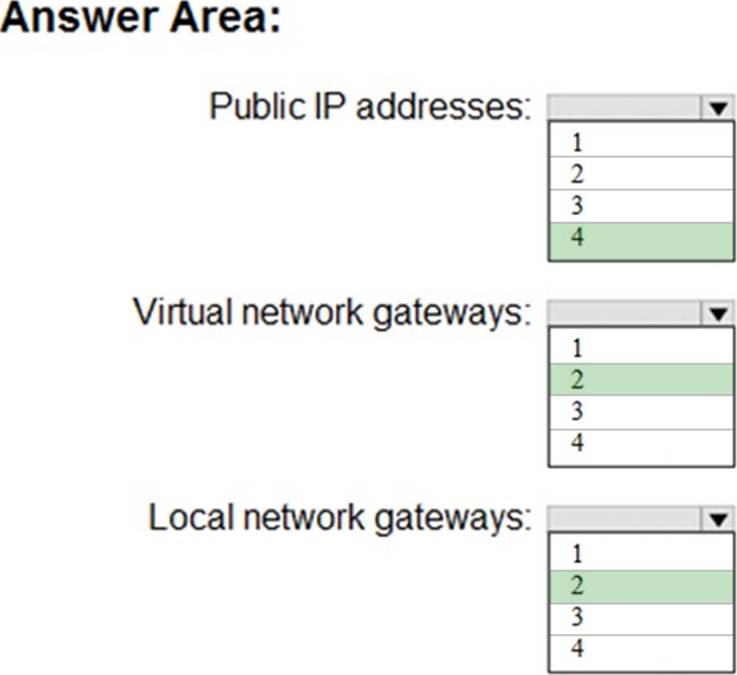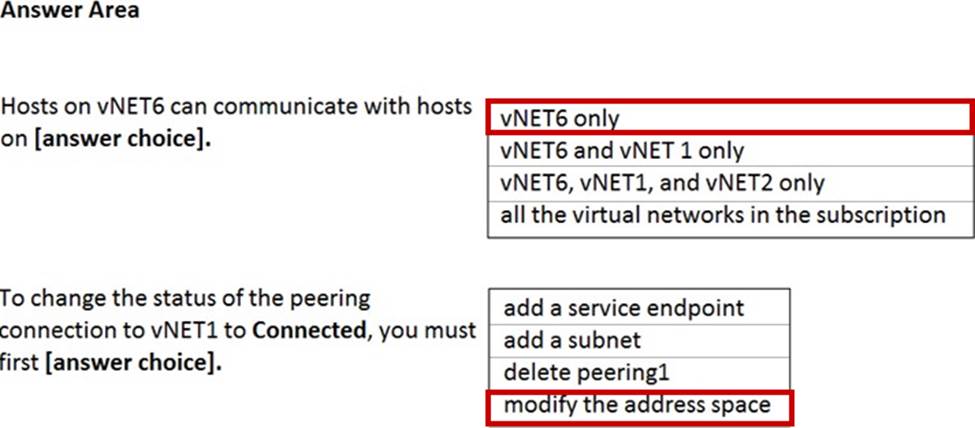Microsoft AZ-300 Microsoft Azure Architect Technologies Online Training
Microsoft AZ-300 Online Training
The questions for AZ-300 were last updated at Jun 29,2025.
- Exam Code: AZ-300
- Exam Name: Microsoft Azure Architect Technologies
- Certification Provider: Microsoft
- Latest update: Jun 29,2025
HOTSPOT
You have Azure Storage accounts as shown in the following exhibit.

Use the drop-down menus to select the answer choice that completes each statement based on the information presented in the graphic. NOTE: Each correct selection is worth one point.
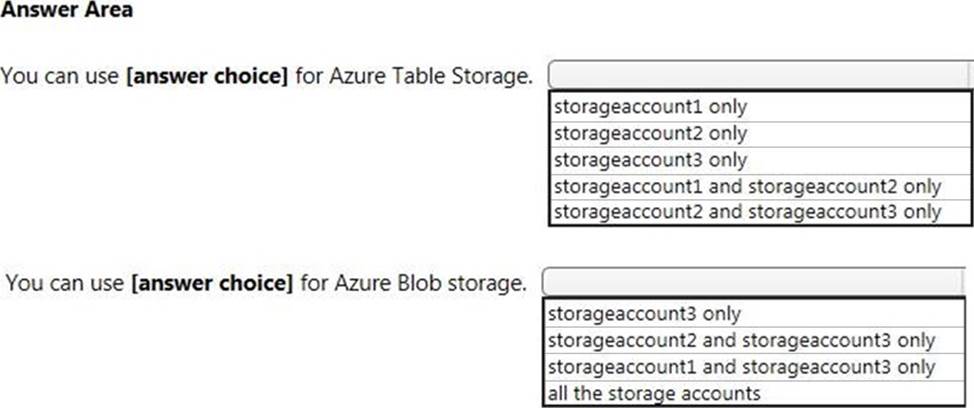
Note: This question is part of series of questions that present the same scenario. Each question in the series contains a unique solution that might meet the stated goals. Some question sets might have more than one correct solution, while others might not have a correct solution.
After you answer a question in this section, you will NOT be able to return to it. As a result, these questions will not appear in the review screen.
You are planning to create a virtual network that has a scale set that contains six virtual machines (VMs). A monitoring solution on a different network will need access to the VMs inside the scale set. You need to define public access to the VMs.
Solution: Deploy a standalone VM that has a public IP address to the virtual network.
Does the solution meet the goal?
- A . Yes
- B . No
Note: This question is part of series of questions that present the same scenario. Each question in the series contains a unique solution that might meet the stated goals. Some question sets might have more than one correct solution, while others might not have a correct solution.
After you answer a question in this section, you will NOT be able to return to it. As a result, these questions will not appear in the review screen.
You are planning to create a virtual network that has a scale set that contains six virtual machines (VMs). A monitoring solution on a different network will need access to the VMs inside the scale set. You need to define public access to the VMs.
Solution: Implement an Azure Load Balancer.
Does the solution meet the goal?
- A . Yes
- B . No
Note: This question is part of series of questions that present the same scenario. Each question in the series contains a unique solution that might meet the stated goals. Some question sets might have more than one correct solution, while others might not have a correct solution.
After you answer a question in this section, you will NOT be able to return to it. As a result, these questions will not appear in the review screen.
You are planning to create a virtual network that has a scale set that contains six virtual machines (VMs). A monitoring solution on a different network will need access to the VMs inside the scale set. You need to define public access to the VMs.
Solution: Design a scale set to automatically assign public IP addresses to all VMs.
Does the solution meet the goal?
- A . Yes
- B . No
HOTSPOT
You have an on-premises data center and an Azure subscription. The data center contains two VPN devices. The subscription contains an Azure virtual network named VNet1. VNet1 contains a gateway subnet.
You need to create a site-to-site VPN. The solution must ensure that is a single instance of an Azure VPN gateway fails, or a single on-premises VPN device fails, the failure will not cause an interruption that is longer than two minutes.
What is the minimum number of public IP addresses, virtual network gateways, and local network gateways required in Azure? To answer, select the appropriate options in the answer area.
NOTE: Each correct selection is worth one point.
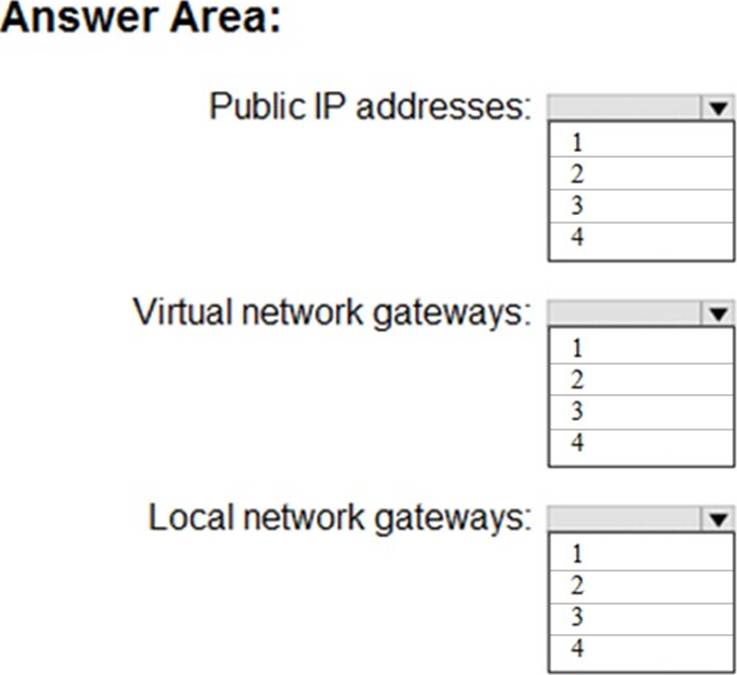
HOTSPOT
You have peering configured as shown in the following exhibit.
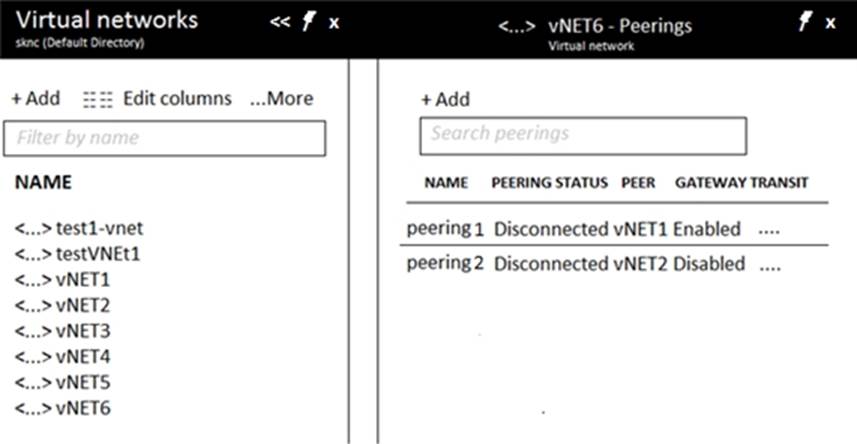
Use the drop-down menus to select the answer choice that completes each statement based on the information presented in the graphic. NOTE: Each correct selection is worth one point.
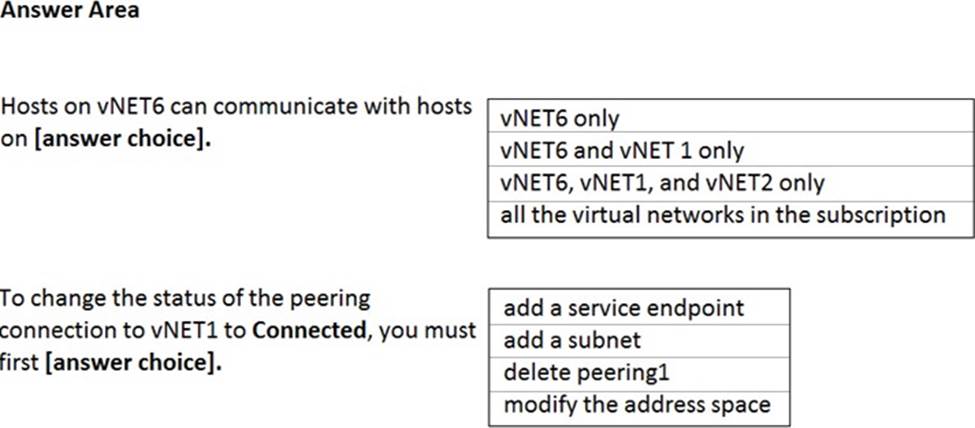
You have an Azure Kubernetes Service (AKS) cluster named Clus1 in a resource group named RG1.
An administrator plans to manage Clus1 from an Azure AD-joined device.
You need to ensure that the administrator can deploy the YAML application manifest file for a container application.
You install the Azure CLI on the device.
Which command should you run next?
- A . kubectl get nodes
- B . az aks install-cli
- C . kubectl apply Cf appl.yaml
- D . az aks get-credentials –resource-group RG1 –name Clus1
Note: This question is part of series of questions that present the same scenario. Each question in the series contains a unique solution that might meet the stated goals. Some question sets might have more than one correct solution, while others might not have a correct solution.
After you answer a question in this section, you will NOT be able to return to it. As a result, these questions will not appear in the review screen.
You are planning to create a virtual network that has a scale set that contains six virtual machines (VMs). A monitoring solution on a different network will need access to the VMs inside the scale set. You need to define public access to the VMs.
Solution: Use Remote Desktop Protocol (RDP) to connect to the VM in the scale set.
Does the solution meet the goal?
- A . Yes
- B . No
You have an Azure subscription that contains the virtual networks shown in the following table.

You need to recommend a connectivity solution that will enable the virtual machines on VNET1 and VNET2 to communicate through the Microsoft backbone infrastructure.
What should you include in the recommendation?
- A . Azure ExpressRoute
- B . peering
- C . a site-to-site VPN
- D . a point-to-site VPN
You create an Azure virtual machine named VM1 in a resource group named RG1.
You discover that VM1 performs slower than expected.
You need to capture a network trace on VM1.
What should you do?
- A . From Diagnostic settings for VM1, configure the performance counters to include network counters.
- B . From the VM1 blade, configure Connection troubleshoot.
- C . From the VM1 blade, install performance diagnostics and run advanced performance analysis
- D . From Diagnostic settings for VM1, configure the log level of the diagnostic agent.
Latest AZ-300 Dumps Valid Version with 283 Q&As
Latest And Valid Q&A | Instant Download | Once Fail, Full Refund

